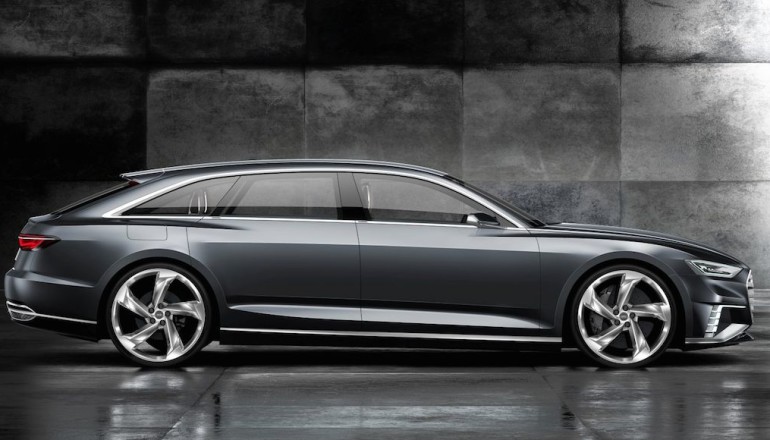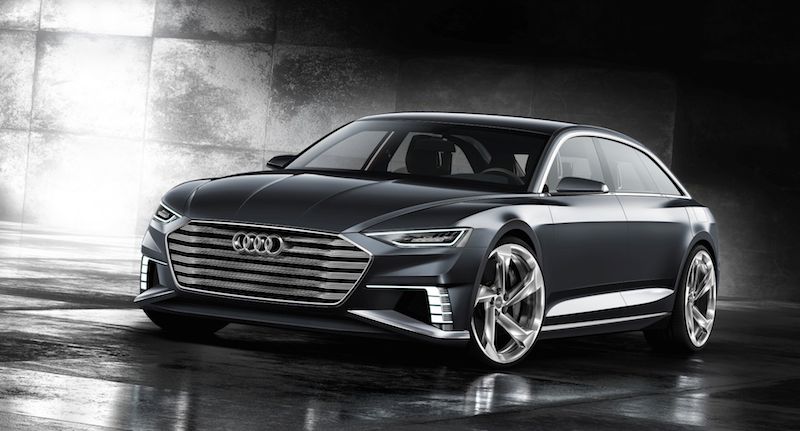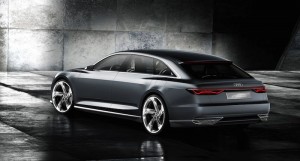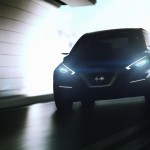Four months ago, Audi presented the Audi prologue concept car at the Los Angeles Motorshow, and now a variant is on display at the Geneva Motor Show. Audi is confident that The Audi prologue Avant combines dynamics, form and function in a perfect synthesis.
The design
At a glance, the Audi prologue Avant can be recognized to be an Audi – with its athletic build, taut surfaces and sharp edges. It nods back to the deign and space concepts of the proto Avant from 1982, and re-interprets this design. With a length of 5.11 meters, a wheelbase of 3.04 meters, a width of 1.97 meters and a height of 1.4 meters, the Audi prologue Avant is a little larger than the two-door coupé Audi prologue. With four individual seats, the five-door car, with a stretched roof, extremely flat D-pillars, and a large tailgate, offers unmistakable sportiness and variability.
The Singleframe grille is placed lower and wider than the current models, and dominates the show car’s low front. Its cross ribs made from brushed aluminum present a new variant of the e-tron look, and ate slightly bent and forked at the sides. The headlamps utilize the high-resolution Matrix Laser technology – the latest light innovation by Audi, wherein the light is decomposed into a high number of tiny pixels, resulting in virtually unlimited distribution possibilities.
Series-ready technology
Though still a concept, the Audi prologue Avant uses technology that is close to series production. The plug‑in hybrid drive from the Audi Q7 e‑tron quattro sees even better performance figures in the show car. The 3.0 TDI engine and the electric motor together delivers 455 hp of system power output taking the car from 0 to 100 km/h in 5.1 seconds. The electric range alone is 54 kilometers. The chassis is equipped with adaptive air suspension and the dynamic all‑wheel‑drive steering system –the rear wheels can be inclined by up to five degrees providing good handling and high drive stability. The concept combines comfort, sportiness, handling and stability on a new performance level.
Futuristic connected cockpit
The architecture forms a new whole with its display and control concept. The front of the dashboard has three touch displays. The driver and up to three passengers are digitally connected with one another via two OLED‑displays made from organic LEDs. The slim, detachable OLED displays in the rear are a spin-off of the Audi tablet from the new Audi Q7.
The front of the dashboard is across its width a tough display surface split into three. The two driver-faced displays left and right of the steering wheel serves to control the assist functions and multimedia management respectively. The widescreen that faces the front passenger serves to configure entertainment features individually and conveniently. With a wiping movement, the front passenger can send media content such as music playlists to the right driver display or navigation data to the Audi virtual cockpit behind the steering wheel.
The central tunnel console houses another display for text entry, air conditioning and infotainment designed for the driver made of an OLED film (OLED: organic light emitting diodes). Its curved display ensures a constant ergonomic distance to the driver’s hand, his wrist calmly resting on the eight‑speed tiptronic selector lever.
Within the driver’s field of view lies the Audi virtual cockpit future. High-resolution displays and three mirrors generate a virtual visual stage with three levels. In the navigation view, for instance, the first level presents information that is important for driving; levels two and three generate the depth effect in the cockpit. According to driving style, content and colors will change in the Audi virtual cockpit future – when driving tempers unleash, for instance, the display changes to sport mode.













